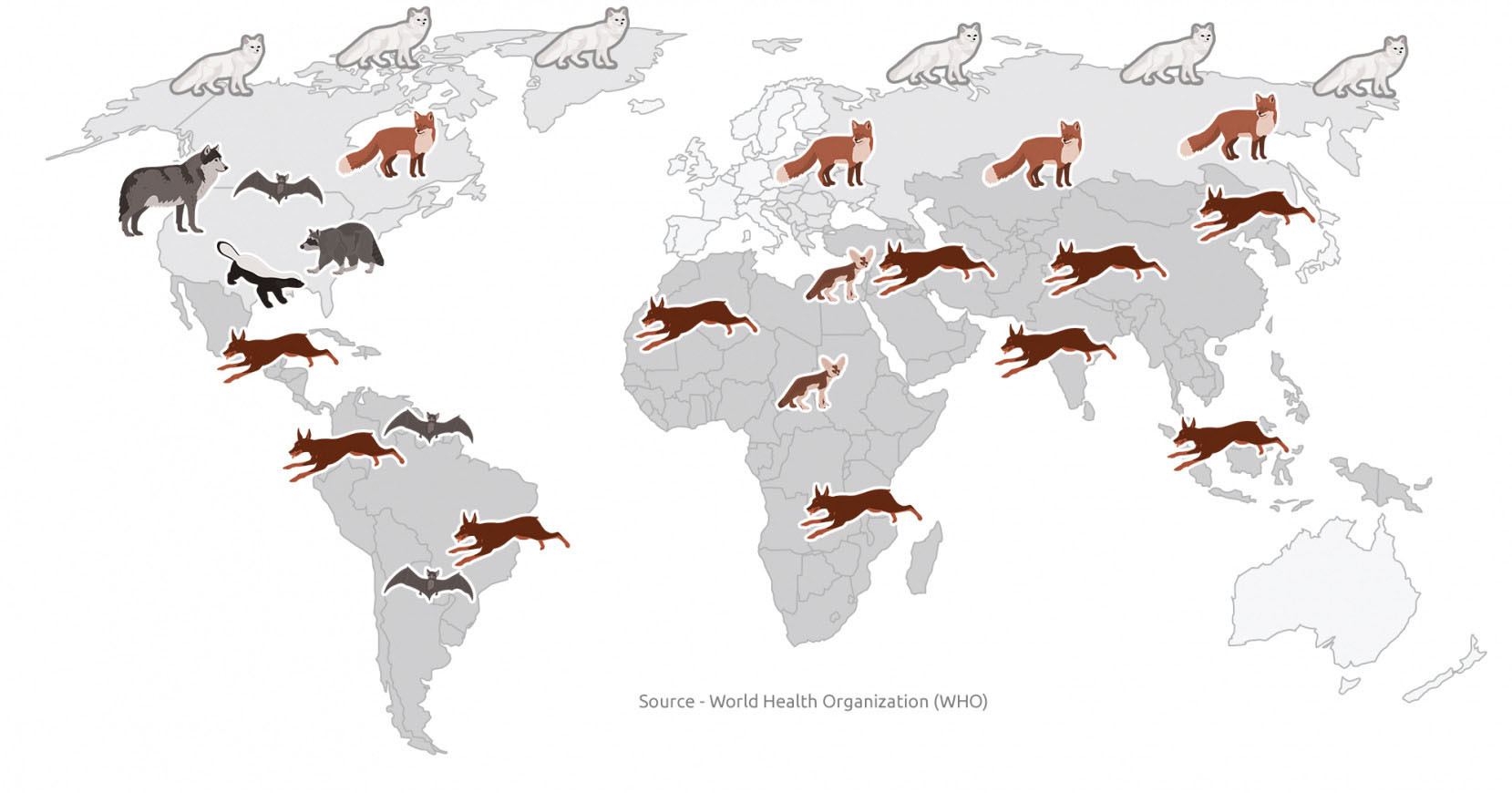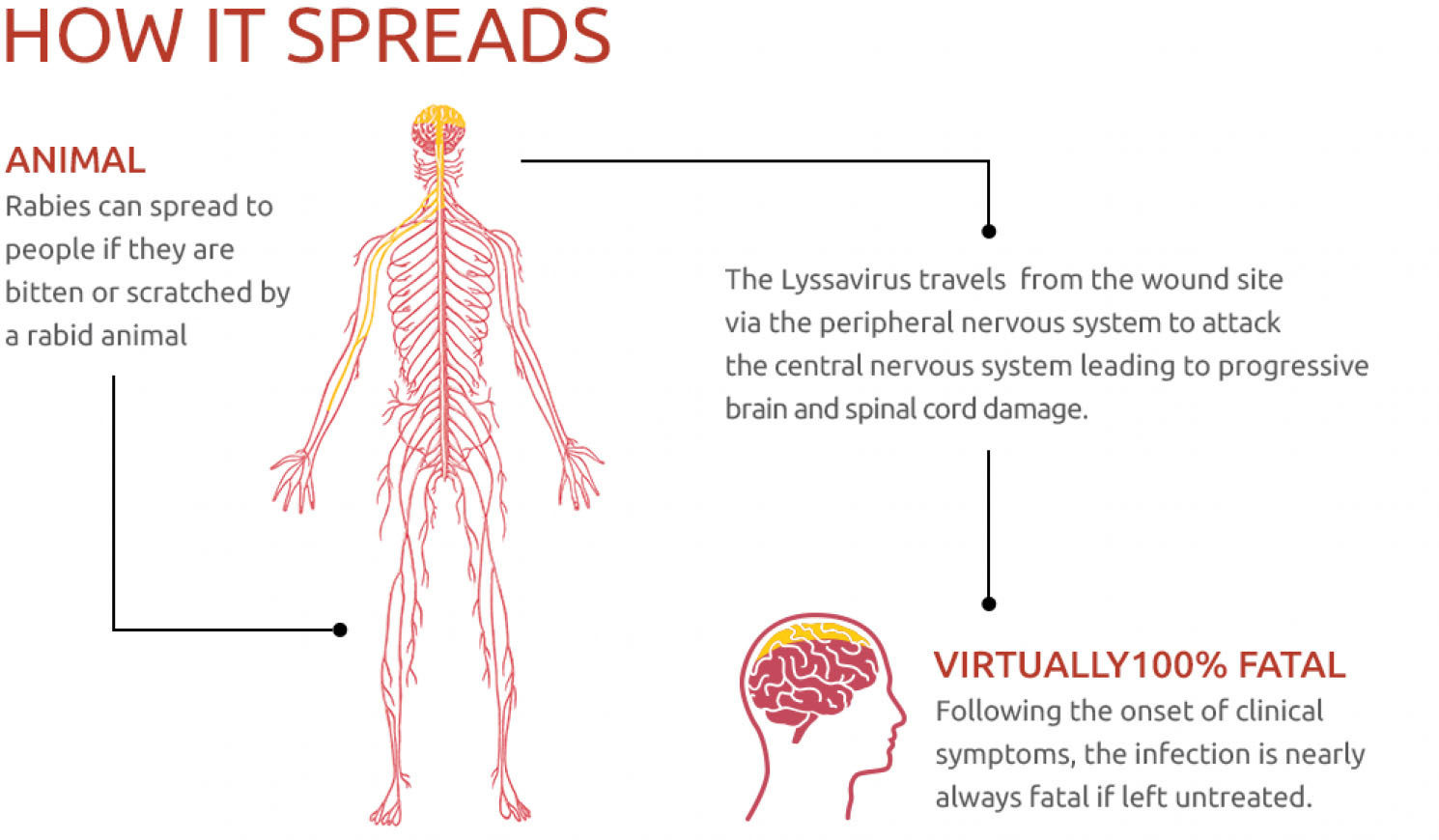Rabies: 100 per cent fatal, 100 per cent preventable
Learn more about Rabies prevention
How is Rabies Transmitted?
- Rabies is transmitted in the saliva of rabid animals and generally enters the body when individuals are exposed to virus-laden saliva via scratches or bites
- Rabid animals may not look sick and may act in surprising, unpredictable ways
Animals that Transmit Rabies
Infected dogs cause up to 99% of human deaths from rabies worldwide.
- In the Americas, bats are now the major cause of human deaths from rabies as dog-mediated transmission has mostly been broken in this region
- Bat rabies represents an emerging public health threat in Australia and Western Europe
- Other common carriers include Raccoon, Monkey, Fox, Mongoose, Cat and Skunk
Common Carriers
In a study that assessed travelers’ exposure to animals, the most frequently reported bites were made by dogs (57.1%), followed by monkeys (25.7%) and cats (10.6%)
Who is at Risk?
1. WHO recommends consideration of pre-exposure prophylaxis (PrEP) for outdoor travellers to remote areas with a high rabies exposure, where immediate medical care may be limited.
In a global survey of travel clinics, nearly 500 travelers per year were in need of rabies PEP. Potential rabies exposure was more common than infection with hepatitis A or typhoid fever, which affected 20 and 40 travelers per year, respectively.
2. PrEP immunisation is recommended for people in certain high-risk occupations such as:
- laboratory workers handling live rabies and rabies-related (lyssavirus) viruses;
- people (such as animal disease control staff and wildlife rangers) whose professional or personal activities might bring them into direct contact with bats, carnivores, or other mammals that may be infected.
3. Immunisation should also be considered for children living in, or visiting remote areas with a high rabies exposure. As they play with animals, they may receive more severe bites, or may not report bites.
Clinical Manifestations of Rabies
-
When infected with rabies, progressive and fatal encephalitis develops as the virus spreads to the central nervous system
-
The incubation period of rabies is considered one of the most variable among viral infections of the central nervous system: it typically lasts between 20 to 90 days but can range from a few days to a year or more
-
This variability depends upon factors such as location of virus entry and viral load
-
Initial symptoms include a fever with pain and unusual or unexplained tingling, pricking, or paraesthesia at the wound site
-
Once rabies symptoms appear, survival is extremely rare
|
Furious rabies
|
Paralytic rabies
|
|
~80% of rabies cases
|
~20% of rabies cases
|
|
Characterised by signs of CNS irritation:
-
Hyperactivity
-
Excitable behaviour
-
Hydrophobia
-
Aerophobia
|
Characterised by weakness and paralysis:
|
|
Rapidly progressing disease, with death due to cardio-respiratory arrest
|
Slower disease progression
|
With just one bite or scratch, rabies can end a trip and possibly a life, but with a rabies vaccine you can prevent it.
Learn more









